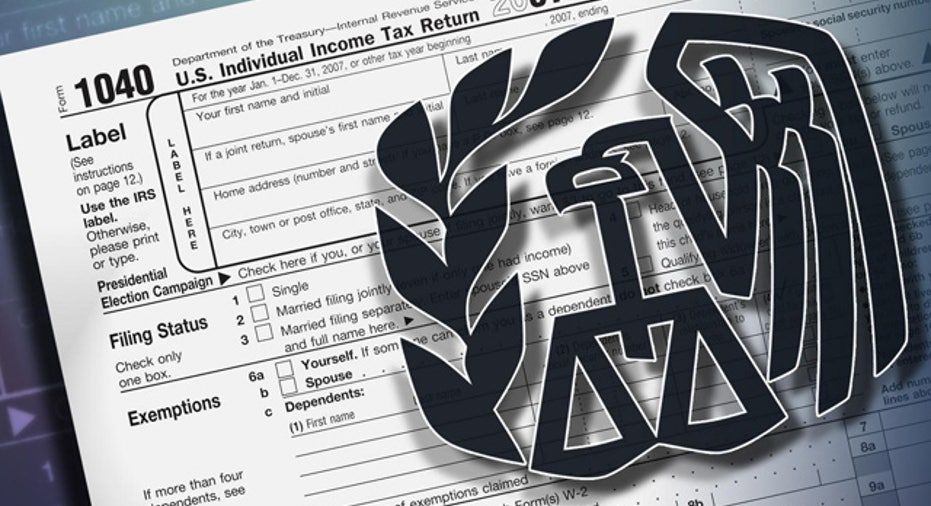Tax Traps and Pitfalls in the Affordable Care Act

The glitches plaguing the Affordable Care Act's health insurance website has prevented many Americans from signing up for coverage, but that doesn't mean other parts of the health-care legislation aren't in full swing or are going to be delayed. The two new taxes introduced to fund ObamaCare kicked in back on Jan. 1, and if you fall into an income bracket that makes you susceptible to these, you won’t appreciate the full impact until you start filling out your 2013 tax return.
In fact, you could be in for a rude awakening.
As I wrote last week, the 0.9% Medicare surtax starts taking a bite out of your paychecks once your gross wages exceed $200,000. The problem is that if you have two jobs, or both you and your spouse work, you could inadvertently end up getting hit with a penalty for underpayment of your taxes.
Instead of applying to income earned from a job, the other new health-care tax affects the profit you make on investments. This includes things such as stock dividends, interest on bank accounts, royalties, rent (1) and income from passive activity(2). The tax also applies to capital gains from the sale of assets, including the sale of your home.(3)
This 3.8% tax is essentially another surtax: It is added to the regular tax you would pay on investment income after all expenses (such as commissions) are deducted. Thus the name: Net Investment Income Tax (NIIT).
The NIIT is based on your tax filing status and your adjusted gross income (AGI). It only applies if you hit one of the following thresholds:
Jack and Jill, a married couple with an AGI of $251,000- $1,000 over the threshold, would have to pay an additional 3.8% NIIT on the dividends and capital gains they received this year.
However, according to the tax experts at Thomson Reuters, they would not necessarily pay this additional tax on the entire amount. That’s because the 3.8% surtax applies to either: a) the full amount of your net investment income, or b) the amount by which your AGI exceeds the threshold--whichever is less.
For instance, let’s assume that $100,000 of the AGI reported by the couple is due to the fact that they made of profit of $600,000 when they sold their home. After subtracting the $500,000 exclusion, $100,000 must be reported as a long-term capital gain. According to Thomson Reuters senior analyst Harris Abrams, since their AGI exceeds the threshold by $1,000, which is less than the $100,000 in net investment income they received, “the 3.8% only hits the lesser amount. That is, $1,000.”
In this case, the couple would pay 18.8% on $1,000 of the gain on the sale of their home: the regular 15% tax on long-term capital gains plus the 3.8% surtax.
Keep in mind, however, that legislation passed back in January to avoid the “fiscal cliff” raised the regular tax rate on dividends and long-term capital gains. Those who fall into the new 39.6% income tax bracket will now pay 20% on dividends and capital gains. As a result, these taxpayers could pay as much as 23.8% (20% + 3.8%) thanks to the NIIT. (4)
What’s confusing about the two new taxes is that, while the income triggers are the same, each tax is based on a different definition of “income.”
For purposes of the 0.9% Medicare surtax, “income” has nothing to do with your AGI. Instead, it means gross wages from a job. “In general, it’s your W-2 income,” explains Michael Sonnenblick, a tax analyst at Thomson Reuters. (It also includes self-employment income, if you have any.) If you’re not married, this surtax is applied once your wages hit $200,000. In the case of a married couple, you have to consider the combined wages of both spouses. If this exceeds $250,000, you’ll pay an additional 0.9% on the amount above the threshold.
On the other hand, AGI, which determines whether you are liable for the 3.8% NIIT is the number on the last line of page 1 on your 1040 tax return form. This is higher than your “taxable income” because it does not have personal exemptions and standard or itemized deductions subtracted from it. (These adjustments are made on page 2.)
If you want to avoid triggering the NIIT, the key is to manage your income to the extent possible in order so that your AGI doesn’t exceed the threshold. Or, to the extent possible, minimize the excess amount. “Think twice before converting a traditional IRA to a Roth,” advises Abrams. That’s because some or all of the amount you convert will increase your AGI.
Talk with your financial advisor about re-allocating your investments to potentially avoid getting hit with the tax. For instance, to reduce your exposure to the NIIT you might be better off owning dividend-paying stocks and mutual funds inside tax-deferred accounts such as IRAs or annuities. The 3.8% surtax makes municipal bonds more attractive because the interest they pay is not taxable. As a result, it won’t push you closer to the threshold and it isn’t included in “investment income.”
However, Thomson Reuters points out that “increasing your itemized deductions, such as charitable contributions, will not reduce NIIT.” That’s because your AGI is calculated before itemized deductions are subtracted.
1. Unless the “active trade or business” is met.
2. A trade or business in which you contribute less than 500 hours/year.
3. A portion of the profit you earn from selling your primary residence is excluded from gross income and would not be subject to NIIT. If you are unmarried, up to $250,000 of gain is tax-free. The amount for a married couple is $500,000. However, your entire profit on the sale of a second home is taxable.
4. Short-term capital gains would be taxed at 43.4% (39.6%+3.8%).